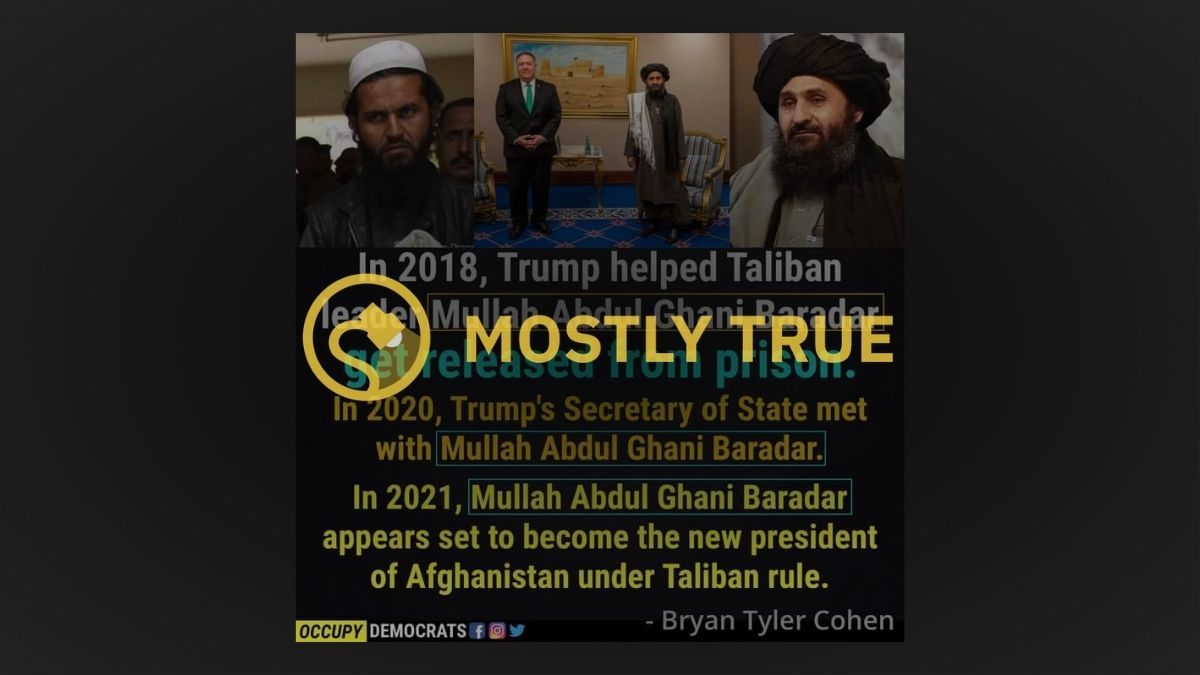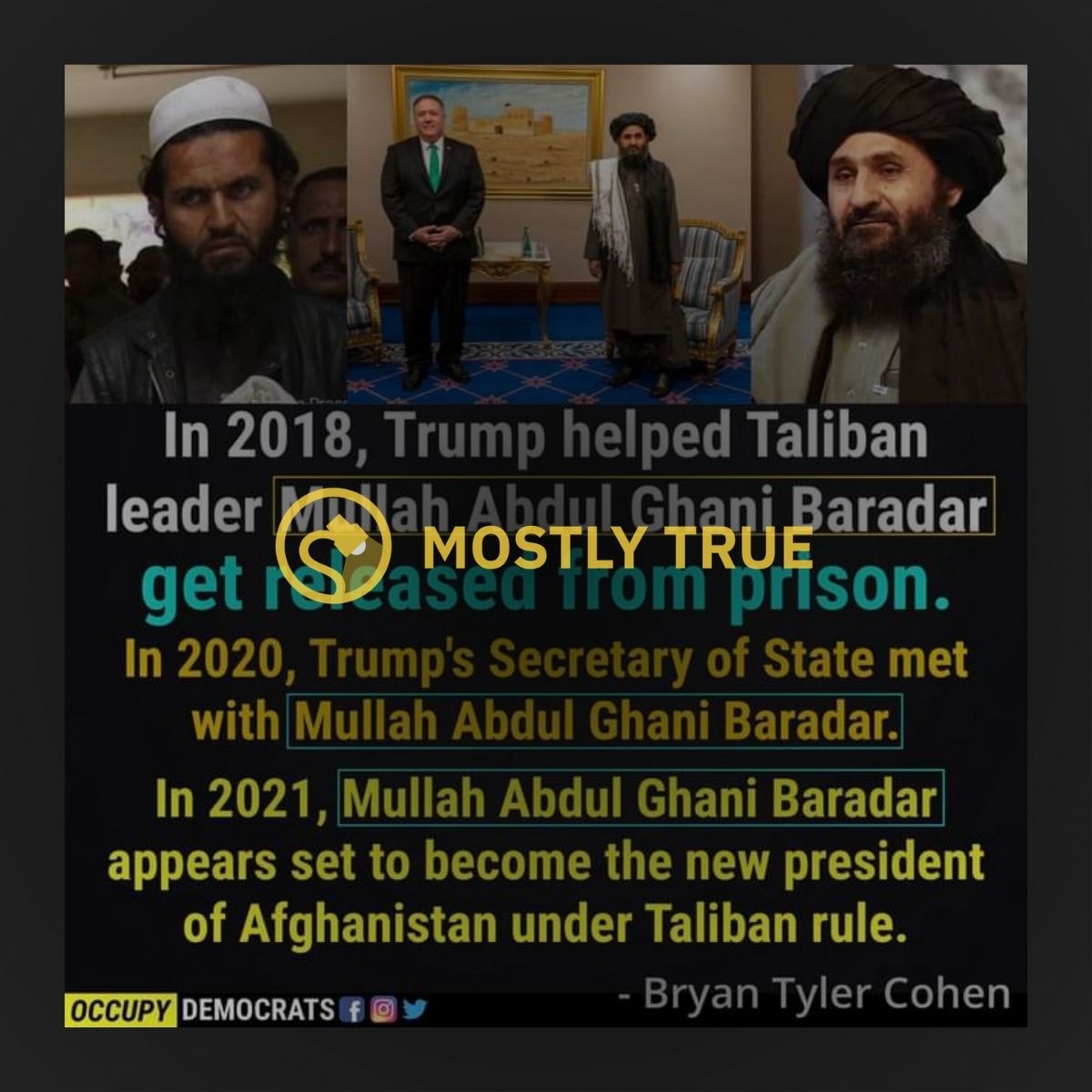Mullah Abdul Ghani Baradar was released from prison in 2018 by Pakistani officials after pressure from the U.S. government under the Trump administration. A photograph accurately shows that he met with then-Secretary of State Mike Pompeo in September 2020 to launch peace talks.
The Taliban has not announced its current government or the role Baradar will play in it yet.
As the Taliban took over Afghanistan in mid-August 2021, and foreign powers departed from the region, many analyzed the role of successive U.S. governments in creating and exacerbating the problem.
One meme in particular targeted the administration of former U.S. President Donald Trump for its part in releasing a major Taliban figure, Mullah Abdul Ghani Baradar. The meme claims that, “In 2018 Trump helped Taliban leader Mullah Abdul Ghani Baradar get released from prison. In 2020, Trump’s Secretary of State met with Mullah Abdul Ghani Baradar. In 2021, Mullah Abdul Ghani Baradar appears set to become the new president of Afghanistan under Taliban rule.”
Baradar was captured by American and Pakistani agents in 2010, and was held by Pakistan for most of the decade. Then-President Hamid Karzai had been trying to get the Pakistani government to release him for years, hoping that it would jumpstart peace talks. As the U.S. began the process of peace talks with the Taliban, the U.S. also worked on pressuring the Pakistani government to release him. Then finally in 2018, the Pakistani government succumbed to U.S. pressure and released Baradar.
Trump selected special envoy Zalmay Khalilzad to facilitate the peace process. Khalilzad admitted in a 2019 talk at the U.S. Institute for Peace that he had requested the release of Baradar. He argued that Baradar had a reputation of being more “pro-peace.” He made the comments around 39 minutes into the video below:
In September 2020, then-Secretary of State Mike Pompeo tweeted a photograph of himself meeting with Baradar, to mark the beginning of peace negotiations between the U.S. and the Taliban. This is the same photograph that was used in the above meme.
Baradar met Pompeo twice in 2020, and even spoke to Trump on the phone, according to The Economist.
Negotiators described Baradar as quiet and difficult to read, but also as someone who was always able to facilitate a breakthrough. Others complained that he controlled communication very tightly, not allowing much room for dialogue in other meetings.
Right before the Taliban took over Kabul, Baradar was its public face, assuring American diplomats that they could evacuate before they arrived. He is widely considered to be one of the main, publicly known leaders among the Taliban since the collapse of the Afghan government, making statements that have been spread on social media. He has also been a central figure in the movement from its earliest days under Mullah Omar, acting as a military commander during the Taliban takeover in 1994, according to The Wall Street Journal.
Despite Baradar currently being a central figure in the Taliban, it is not yet known how it will form a government, nor has it made any announcement of who would be a possible “president” or similar figure. Many online outlets are predicting that he could be the possible leader of Afghanistan under the Taliban.
As such, we rate this claim as “Mostly True.” We will update this post as we know more.


